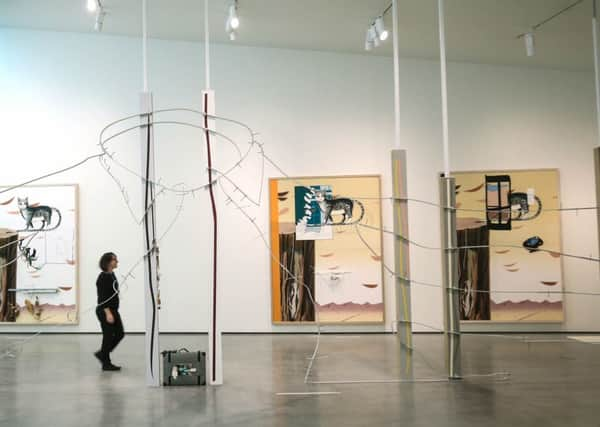Simon Wallis: Region can still carve reputation for art excellence


One of the gratifying successes of The Hepworth Wakefield’s first five years has been the insights it has provided into the work of Barbara Hepworth.
Visitors to the gallery can explore and discover how her sculpture is made through displays of her working models, tools, drawings and objects of inspiration. Our aim is to help demystify the process of creating sculpture, while still retaining the essential enigma and power of Hepworth’s works for everyone to experience and interpret.
Advertisement
Hide AdAdvertisement
Hide AdBarbara Hepworth and Henry Moore were both influenced greatly by the Yorkshire landscape and industry that surrounded them where they grew up in Wakefield and Castleford respectively. Their home county is a pragmatic one of making and creating, where nature and the man-made closely coexist, providing the perfect training ground for sculptors.
Both artists searched for expression that reflected the radically changing times in which they lived that included two devastatingly traumatic wars, the rise of consumer culture and growth of globalism.
Generations of artists continued to develop the language of sculpture within Britain. From Antony Gormley’s inspirational Angel of the North to the Fourth Plinth in Trafalgar Square – why doesn’t every UK city have one? – they help keep sculpture as a vital part of everyday public life.
Most recently we can add to this The Hepworth Wakefield’s £30,000 biennial award, The Hepworth Prize for Sculpture. This major new award recognises a British or UK-based artist of any age, at any stage in their career, who has made a significant contribution to contemporary sculpture.
Advertisement
Hide AdAdvertisement
Hide AdSignificantly, The Hepworth Wakefield is bringing Yorkshire to the fore again in sculpture, with the launch of this new award as part of the gallery’s fifth anniversary celebrations during 2016. Named in honour of Barbara Hepworth, it is a fitting legacy to one of Britain’s greatest sculptors.
There is no shortage of prizes in the art world, however few specifically recognise sculpture. We wanted therefore to address this by launching one of the UK’s most important new awards. We have based the selection of the four shortlisted artists – Phyllida Barlow, Helen Marten, David Medalla and Steven Claydon – on the significance of their contribution to sculpture.
Our prize creates a fascinating dialogue between sculptors of different generations. It also puts this into an historical context with the Wakefield Permanent Art Collection that has great strengths in modern British sculpture. This interchange between past and present is hugely popular with our visitors.
The Hepworth Prize for Sculpture sits perfectly within the context of the Yorkshire Sculpture Triangle, which comprises four of the UK’s leading public art institutions – The Hepworth Wakefield, Yorkshire Sculpture Park, The Henry Moore Institute and Leeds Art Gallery – all with sculpture at the heart of their programmes and near neighbours in the Leeds City Region.
Advertisement
Hide AdAdvertisement
Hide AdThe city fathers of Leeds might not have known when they commissioned its gallery on the Headrow that eventually only the national collections of Tate could rival it as the nation’s principal collection of sculpture. Wakefield too had a long and remarkable history of collecting significant work by British modernist artists.
In subsequent decades, West Yorkshire has seen the realisation of the remarkable Yorkshire Sculpture Park, arguably the world’s finest open-air art museum, followed by the opening of Henry Moore’s own Institute, unique in its support of world-leading levels of study and research into sculpture. In 2011, the David Chipperfield-designed Hepworth Wakefield opened, joining these inspiring institutions.
Art is also good business. The Yorkshire Sculpture Triangle is a partnership that attracts over 1.2 million visitors to the region each year and has ambitious plans for future collaborations to help ensure that the world knows that Yorkshire is the true home of sculpture.
Finally, sculpture often requires that artists have access to large studio spaces. For younger artists in a city like London this is increasingly hard to find. In Yorkshire we have a great range of suitable spaces. We need to ensure that urban regeneration allows these affordable spaces to be used for the development of an art form for which Britain and Yorkshire remains renowned.
Advertisement
Hide AdAdvertisement
Hide AdWe now have some of the most influential sculptors in the world in the UK, so let’s see more of their work commissioned and supported to engage the imagination of the nation through sculpture. Yorkshire is already leading the way.